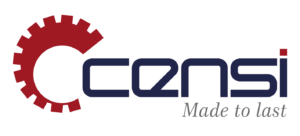Tricks for bias binding cutting
What is bias? And why are there tricks to bias cutting?
The rib knit or bias binding is a part of the fabric, cut into strips and sewn into textiles.
But, it is not simply taken from any part of the fabric.
It must be extracted in a specific area, which has fundamental characteristics in textile manufacturing.
That area is exactly 45 degrees from the warp yarn.
It must always be cut in this direction to maintain its properties.

What is the purpose of the bias?
The main purpose is to hide the seam and make the piece aesthetically more beautiful.
In addition, the bias fabric offers more stretch and fit to the body.
Can you imagine having a shirt and that doesn’t pass trought your head because it doesn’t stretch?
For this reason, it is widely used in necks, armholes and finishes.

So, how to extract this elastic part of the fabric?
First of all, you need to know what type of fabric you are dealing with.
Is it a plain weave or knit?
The flat fabric normally does not stretch anywhere, its structure does not allow it.
Therefore, you must cut the flat fabric in the direction of the weft (in its width) and then join the two parts at 45º.
After correctly joining the parts, you can cut the bias measurement you need.
In knitted fabric, there is no need to join the sides as in flat knitting, since this structure of the fabric already offers elasticity in its width (weft direction).
In addition to cutting the bias correctly, you must pay attention to other variables, such as:
-If you are going to join the fabrics, the ideal is to leave the stitch of the sewing machine looser, like the straight one.
-When joining the fabrics, check if they are well in the square;
-Check the sharpness of your cutting tool, ensuring regularity.
-Do not stretch the fabric when cutting, since this action can vary the size of the bias.
Scissors work for home use, but if you are going to produce on a large scale, we suggest choosing a more productive piece of equipment. See all technologies for bias cutting here.





